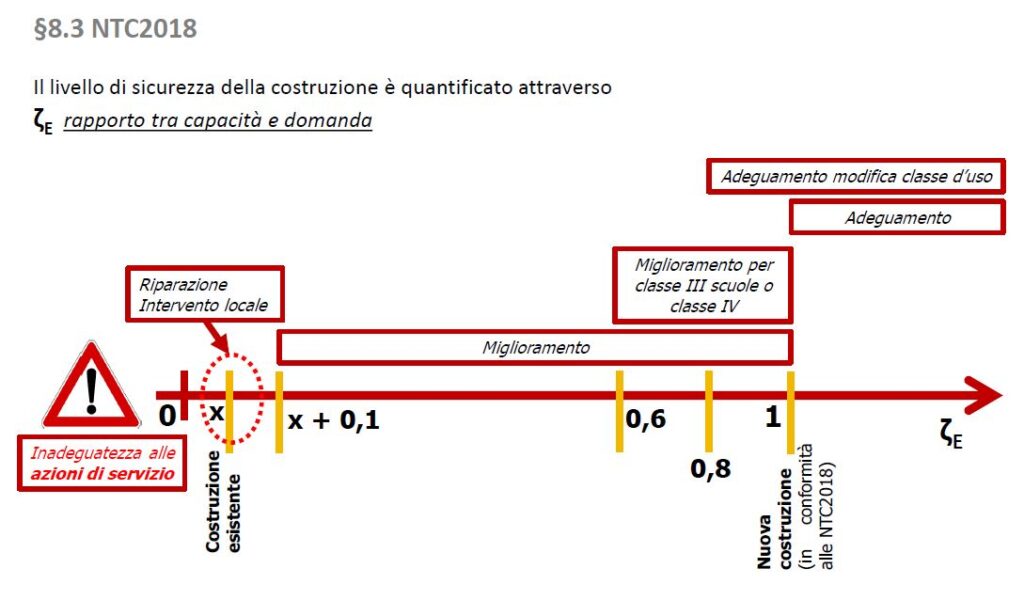Seismic upgrading buildings
Seismic upgrading: on the other hand, it means reaching the level of safety with respect to the action of an earthquake that is required by the legislation for new buildings, specifically, it is necessary, indeed mandatory, to proceed with the seismic upgrading works when: a building is raised or the building is expanded by modifying structural elements (e.g. pillars). The seismic upgrading interventions are aimed at increasing structural safety in order to reach safety levels compatible with that of a newly built structure.
The seismic upgrading intervention is mandatory in the following cases: raising, expansion, changes of intended use which involve an increase in the vertical loads weighing on the foundation greater than 10% of those originally envisaged, or for a change of use class from II to III (only for school buildings) or from III to IV.
These are interventions aimed at increasing the pre-existing structural safety, achieving the safety levels set by the standard. The intervention of adaptation of the construction is mandatory when it is intended:
a) raise the building;
b) expand the construction through works structurally connected to it and such as to significantly alter its response;
c) make changes to the intended use which lead to increases in the global vertical loads on the foundation of more than 10%, evaluated according to the characteristic combination referred to in equation 2.5.2 of § 2.5.3, including only gravitational loads. However, the obligation to proceed with the local verification of the individual parts and/or elements of the structure remains unchanged, even if they involve limited portions of the construction;
d) carry out structural interventions aimed at transforming the building through a systematic set of works which lead to a different structural system from the previous one; in the case of buildings, carry out structural interventions that transform the structural system through the use of new load-bearing vertical elements on which weigh at least 50% of the total gravitational loads referring to the individual floors;
e) make changes to the class of use that lead to class III buildings for school use or class IV buildings.
In any case, the project must refer to the entire construction and must report the checks of the entire post-intervention structure. In the case of seismic retrofitting, the coefficient ζE depends on the type of intervention:
• for the interventions referred to in letters a), b) and d), for the verification of the structure, ζE ≥ 1.0 must be obtained;
• for the interventions referred to in letters c) and e), ζE ≥ 0.80 can be assumed.
However, the obligation to proceed with the local verification of the individual parts and/or elements of the structure remains unaffected, even if they involve limited portions of the construction. A variation in the height of the building due to the construction of curbs at the top or to variations in the roof which do not involve an increase in the habitable surface, is not considered an expansion, pursuant to condition a). In this case it is not necessary to proceed with the adjustment, unless one or more of the conditions referred to in the other previous points are met.

- Last updated on .

